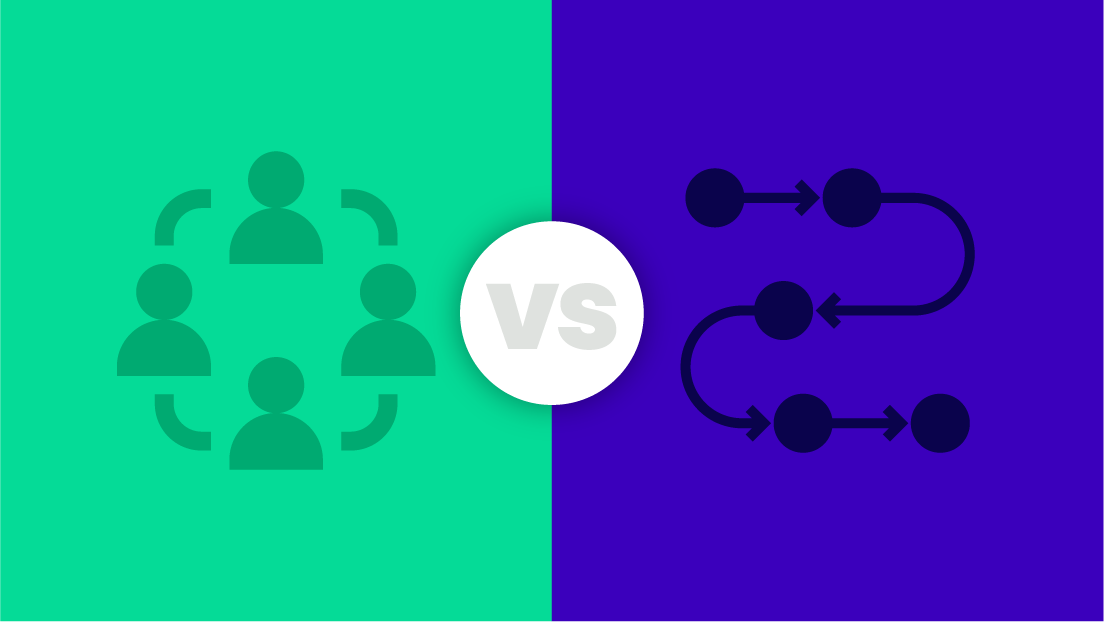Your accounts receivable (A/R) collections process seems simple enough on paper. You provide services, send an invoice, and collect payment. Right?
Not so fast. Many different accounts receivable collection techniques exist, and many of them should be used in conjunction with one another for the best results.
Let’s review a few of the most popular ones so that you can verify that you’re doing all you can to optimize your accounts receivable collections.
What Are the Methods Used to Collect Receivables?
If you’re in the process of upgrading your collections strategy or scaling your efforts, you’ll need to evolve from ad-hoc collections strategies to carefully planned ones targeted to different types of users. For example, a more aggressive approach for customers that have overdue or unpaid invoices would require escalation, whereas an automated workflow should be sufficient for long-time customers who have a history of paying on time. You’ll also want to review these strategies to optimize them regularly as your business goals change.
Here are a few different strategies to explore when learning about how to effectively collect accounts receivable:
1. Calculate ART With A/R Aging Reports
The first step is to calculate the current payment status of all A/R in the company by creating an A/R aging report. This report tracks the status of your accounts and offers insight into your ability to collect funds on time with a metric called accounts receivable turnover (ART).
High ART rates mean your company has efficient A/R collections processes that work well. Your accounts are regularly “turned over,” which means you have few outstanding invoices to collect.
Low ART means you likely have a substantial number of unpaid invoices. This indicates underlying problems you’ll have to contend with, but no matter how the data shakes out, it’s important to know what you’re working with.
2. Offer Your Clients Flexible Payment Plans
When ART is low, it generally means clients aren’t paying as they should. While this isn’t your company’s fault, you can take steps to remediate the issue by offering different payment terms.
It may feel like a concession, but it’s hard to fit a diverse customer base into a one-size-fits-all payment policy. Each client may be from a different type of industry, each with its own culture and challenges. You can increase the odds of getting paid by developing payment plans customized to everyone’s best interest. A payment plan might also change for the same customer for the better based on its revenue, market conditions and customer demand.
On another note: Make sure you do your part in the process. Ensure all sent invoices are clear and complete with no missing details. If any of these mistakes cause your client’s accounting department to kick it out for further review, that delay is on you.
3. Sign a Contract or Create a Purchase Order Immediately
Contracts are an element of effective accounts receivable collection processes that are often overlooked. If possible, get clients to sign a contract immediately, well before work begins. This is an easy way to guarantee payment security and avoid the stressors of working with delinquent clients.
Another method is to create and close a purchase order to ensure all details, including the payment terms, are agreed upon between the two parties. You should never presume your customer will remember any details, it’s up to you to include as much detailed and accurate information on the invoice as possible. The less errors on your invoices, the less time you will spend chasing these payments.
Upgrade your entire A/R processes
Why use a broom when you can use a robot vacuum? That is what Gaviti will do for your accounts receivable process. Why not speak to us and see what A/R automation is all about?
Schedule a Demo4. Be Prompt When Reminding Clients About Payments
For most companies, some late payments are inevitable. This is why every company needs a solid dunning process for collections efficiency. This is an outreach strategy in which you work one-on-one with late customers to understand their situations and develop solutions.
Ideally, you’ll craft each message with care and take each client’s unique situation into account. Not receiving timely payment for services rendered is frustrating, but a standardized dunning process can salvage business relationships in the long run.
5. Consider A/R Automation
One of the single best optimizations you can make to your A/R collections process is to implement an automated accounts receivable solution. If you’ve never worked with an advanced accounts receivable management and automation platform such as Gaviti, you might be surprised with the different capabilities it offers.
This includes:
- Collection team task management
- Real-time performance metrics equipped with actionable insights
- Automated collections actions such as reminders, internal or external escalations
- Performance KPIs for both Individual and collection teams
- Payment forecasting
- Risk scoring
How Gaviti Helps You Coordinate Your A/R Strategies to Collect Receivables More Efficiently
Depending on the maturity of your company’s accounts receivable, you’ll either want to develop A/R strategies from scratch or optimize the current processes your A/R teams already have in place. Gaviti’s A/R management and automation platform streamlines and optimizes the entire A/R process, from invoicing to credit management and monitoring, cash application, disputes and deductions and more.
Its A/R management and automation module allows you to customize collections strategies and maximize results with actions such as defining escalation rules, implementing skip-tracing processes, or tailoring collections communication templates. Its Collection Analytics module centralizes all of your A/R data in one place to track performance and data such as Total A/R, DSO, Collections rate, customer risk and other unique KPIs. These advanced analytics capabilities help you Analyze collections performance over time, identify bottlenecks in the process, and implement targeted improvements so that you can reduce DSO and improve your cash flow.
Remember that collections is just one element of the A/R process, and Gaviti delivers a solution that optimizes your entire A/R lifecycle, with minimal involvement from your IT team. What’s more, its short implementation time, dedicated customer support and user-friendly interface combined with its ability to connect to a single ERP system or multiple systems simultaneously allow you to benefit from the solution immediately.
Want to learn more about how Gaviti can help you optimize your accounts receivable collection strategies?? Speak to a specialist today!





















